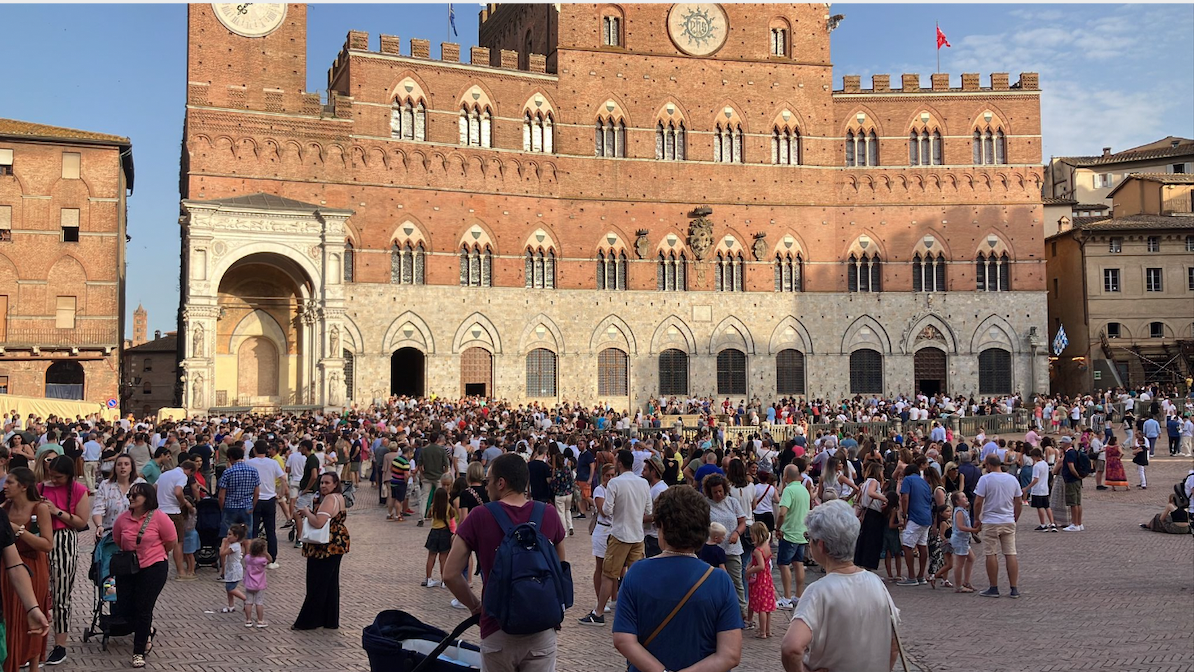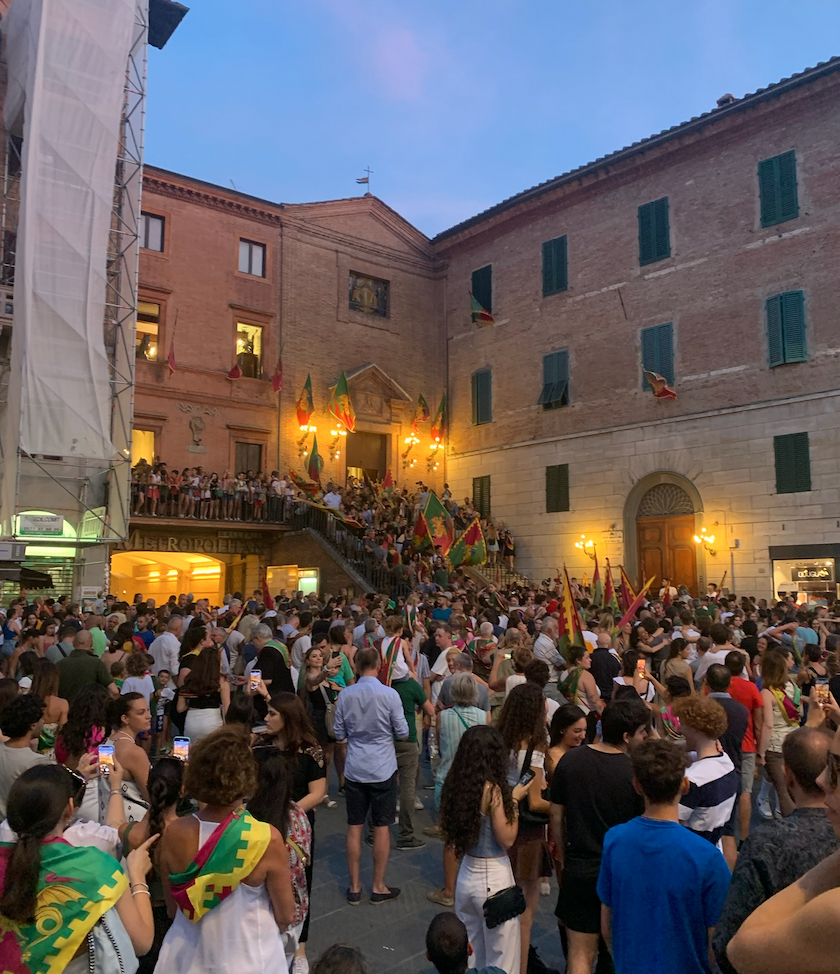Picture a city square filled with members of the city, cheering on the jockey and horse of their neighborhood, and reacting passionately to the results of a race. The winning team crying tears of joy while its competitors are weeping or arguing that the race is unfair. Twice a year you can find this passion in the city of Siena during the Palio races. These are bare-backed horse races that date back to the year 1633 in the city.

These races are between the 17 contradas, which are the 17 districts of Siena. Contrade is used in Italy to divide cities into wards or districts, and in Siena, they became part of the lives of citizens. The Contradas influence community life and provide a civic obligation to their inhabitants. During the Palio, ten Contrade are selected to race, and this changes between each race.
Leading up to the first event, there are trial runs for the horses and the best ten racers are chosen to be the horses of the Palio. The first event of the festival is the choosing of the horses where one of the ten horses is assigned to each competing party. When I attended this event, you could see which Contrada each person lives in as they would wear the flag and the colors of their respective districts. They all filed into the square chanting and singing the motto or songs of their contradas in hopes of being assigned the best horse. As they had also watched the races and kept track of which horses had the most experience, they would react accordingly when they received their assignment. Especially when the best horse was chosen, the Contrada of the Estrice, or porcupine, cheered and ran together to follow the horse out of the square and parade to their home.

The following events were the trials. These were races that occurred each day leading up to the actual race to prepare the jockeys and the horses for the starting arrangements. It was during these days that a few horses and jockeys were injured making the race just between the remaining six contrade. One of these injuries was to Estrice Contrada’s horse. Estrice was the Contrada that we had the opportunity to attend the dinner for the night before the race. While the dinner itself was the largest of all the city, it was also quite somber as during the trial runs, their horse was injured and unable to compete in the actual race.
The day of the race was incomparable. The streets were filled as people from all over the world came to watch this historical tradition continue. The piazza, the town center, was filled with people who stayed there for hours following the mid-day parade of the jockeys and horses. Bleachers were filled with people who had spent thousands of dollars on their seating to view the event while the restaurants and bars were filled with people watching while they enjoyed refreshments. Taking to the advice of the many local Sienese people we came to know during our time there, my classmates and I decided to take part in the latter half for a more enjoyable watching experience.

The race commenced following seven calls back where one jockey was injured. The race was between very few horses by the time it went off. In the restaurant, you could hear the locals cheering for their own contradas as well as arguments between enemy contradas. This year, the race was close between the Torre and Drago contradas but the Drago was victorious in the end. The locals in our restaurant were of this Contrada and sprinted from the establishment to go celebrate in the piazza with their families and friends. The women wept tears of joy and embraced one another as excitement filled the streets. We made our way to the piazza of their Contrada to watch their flag bearers and representatives dressed in traditional Tuscan fashion carrying the Palio banner and the jockey into their district’s museum. The drummers played and marched to the beat of their Contrada as well to begin their night of celebration. This was truly a unique experience of Sienese culture.
